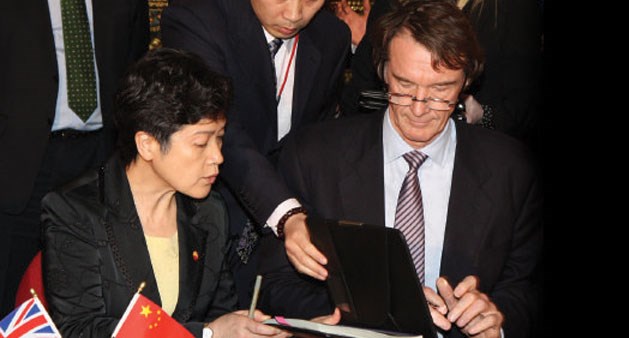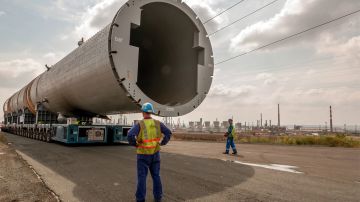Last week marked the tenth anniversary of China’s accession to the World Trade Organisation. In his speech in Beijing on the 11th December 2011, commemorating the event, Pascal Lamy, Director-General of the WTO said: “Ten years is a long minute in China’s millenary history. And yet these ten years have witnessed an unprecedented transformation of China’s economy and society”.
Both in China and around the world the anniversary is of far greater importance than simply reduced barriers to Chinese markets.
“China’s growth miracle did not start in December 2001,” Patrick Lamy continues. “It predates its entry into the WTO. But joining the WTO was seen as a means to anchor reforms and pursue the transformation. WTO membership has served as a stabilizer and accelerator in China’s economic take-off,”
In 1980 at the outset of its reform and opening up period China produced just 2% of the world’s economic output. In 2010 this figure had risen to around 14% and China overtook Japan to become the world’s second largest economy. By 2016 the IMF expects the figure to rise to around 18%, placing China above the US at the top of the table.
As China has developed into the world’s most important trading nation, its trading data has also become a key indicator of the world’s economic wellbeing. So it should be no surprise to see data highlighting its export and import growth showed a reduction in November; a clear reflection of the global economic slowdown.
Recent trade data shows China’s exports grew 13.8% in November from a year earlier, slowing from a 15.9% increase in October. Imports grew 22.1% year-on-year, less than the 28.7% rise a month earlier. Whilst recent growth rates have cooled somewhat, the long term growth forecasts for the region remain impressive. According to estimates, in the next five years it is expected that China’s total imports could exceed $8 trillion, bringing with it enormous opportunities for business around the world.
It is not surprising that this rate of growth has brought about an unprecedented demand for oil and it is little wonder that the PetroChina oil and gas company enjoys one of the biggest sales revenues in China and is now one of the largest companies in the world.
Its recent acquisition of 50% of INEOS’ Refining business provides PetroChina with the perfect springboard to expand its portfolio into Europe and for INEOS provides a new partner that has great influence in China. In a deal worth in excess of $1billion PetroChina and INEOS formed trading and refining joint ventures relating to the refining operations in Grangemouth in Scotland and Lavéra in France. The strategic partnership strengthens the long term sustainability of both refineries; providing further investment, enhancing security of supply, jobs, skills and competitiveness in the European marketplace. There are benefits for both companies and these are by no means confined to the $15billion refining business.
INEOS has been quick to build on the interest that the PetroChina deal has generated. The recent China Petroleum Chemical International conference in Tianjin saw a strong presence from many of the worlds leading players including INEOS.
“China is really where the growth is in the world,” commented Tom Crotty, Group Director for Corporate Affairs and Communications, INEOS. “We are looking at growth rates of 10 – 15% in the chemical industry and for a company such as INEOS this is where we have to be.”
As well as giving a major address to the conference, Tom Crotty and INEOS Oxide CEO, Hans Casier, spoke with many of China’s leading petrochemical Industry figures. They also took time to visit the Tianjin Economic Technology Development Area (TEDA) development site just outside of Tianjin, where major multinationals such as Motorola, Toyota, and Samsung, already have a presence. The current construction programme in the Bohai Bay promises to be an ideal location for the countries burgeoning petrochemicals business.
Highlighting the pace of change Tom describes the TEDA site: “The new port development outside of Tianjin, is a classic example of what is going on inside China and the rapid rate of development that is taking place. The area was sea two years ago. Since then sea channels have been cleared and a new port constructed. A new 30 million tonne refinery and a whole chemical complex is to be built on the back of this infrastructure, which could present enormous opportunities for INEOS”
Whilst its limited natural resources and the environmental cost of its rapid development may prove to be restraining factors, for now at least China represents the true land of opportunity and for those with the necessary resources and expertise the door is clearly wide open.
“The Chinese Petrochemical industry has developed over the past 30 years, and we have a 1.3 billion population so therefore a very high energy demand and a very large energy market,” comments Li yongwu, Chairman of China Petroleum and Chemical Industry Federation. “INEOS has a very big influence on the global petrochemical Industry and we welcome you to come to China, to invest in China and I look forward to cooperating more with you in the future.”
Since 1973, the business that is now INEOS Technologies has been successfully licensing technology to meet the opportunity presented by increased chemicals demand in China. As the partner to a number of China’s leading chemical companies, over this period it has licensed over 11 million tonnes of chemicals capacity. Today, INEOS Technologies knows China well, with over 38 years of experience, as a leading global licensor of polyolefin, polystyrene, nitriles, vinyls and chlor-alkali technologies in this major world market.
Other INEOS businesses are also aligning themselves to address the needs of China. At the beginning of this year (2011) INEOS Phenol signed a Memorandum of understanding, with Sinopec to build and operate a $500m phenol and acetone manufacturing site at the Nanjing Chemical Industrial Park in Jiangsu Province.
INEOS’ Shanghai office is currently home to a sales division representing Technologies, O&P Europe and Phenol. But in a country who’s skyline spans one huge construction project after another and is for now at least driving world economic growth, for Roger Wang, and the rest of the INEOS team in Shanghai, who knows what changes lie ahead.
















